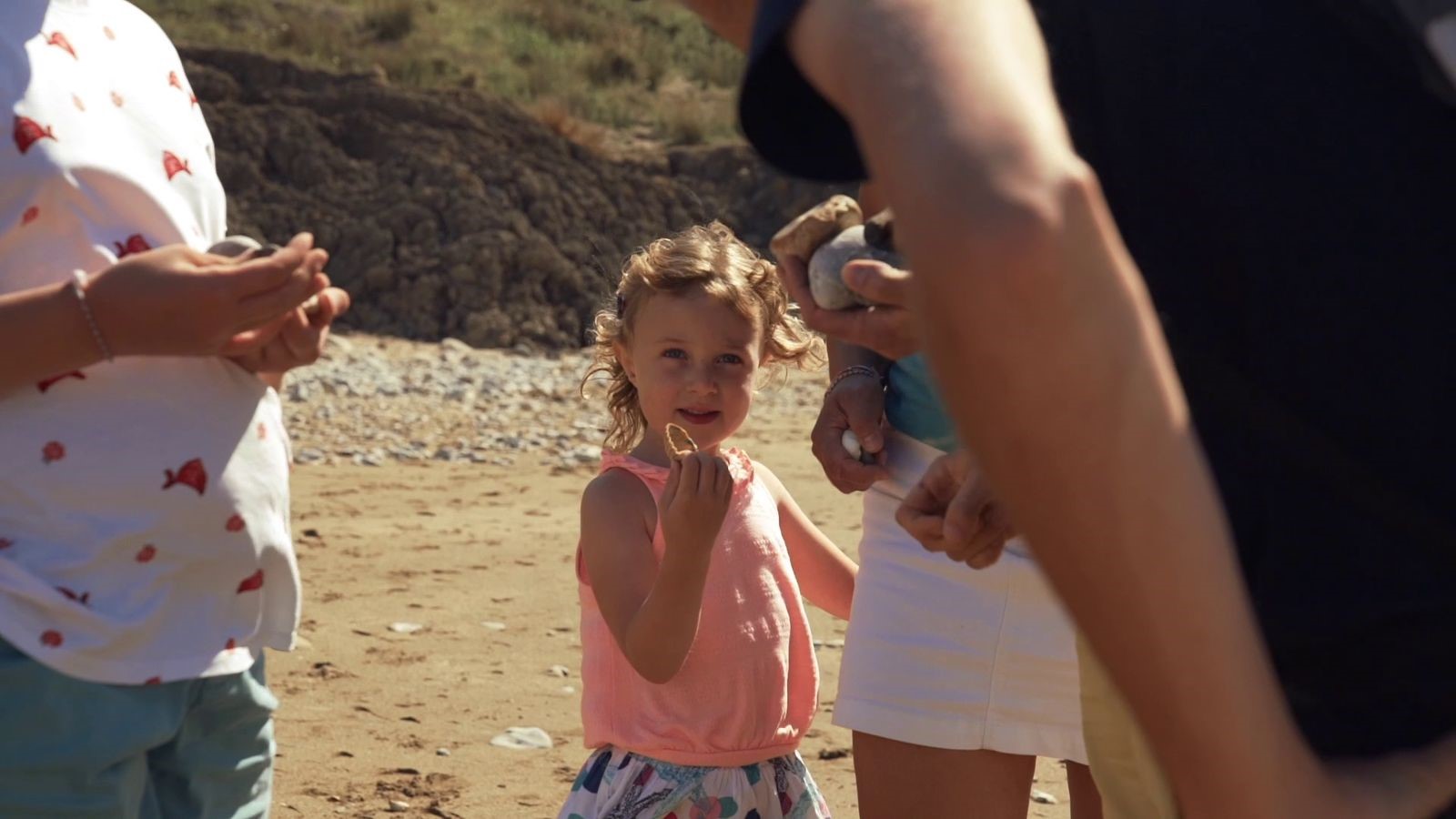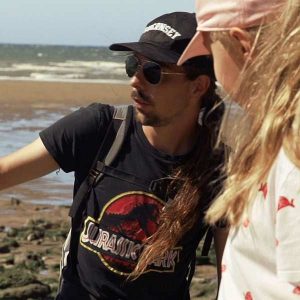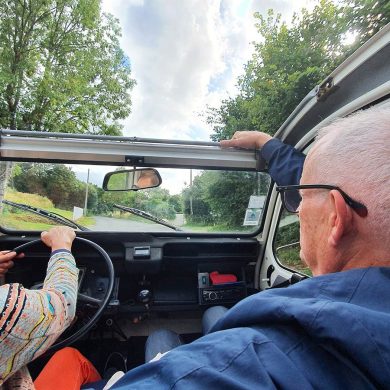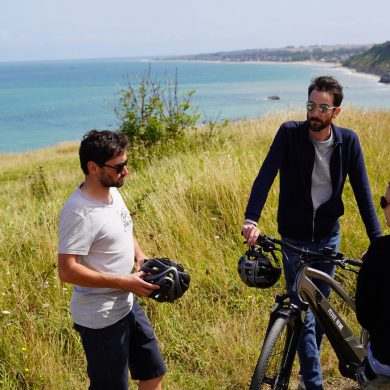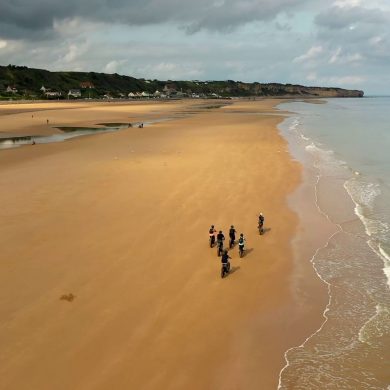Updated on 26 January 2024
Reading time: 3 minutes
On a beautiful summer’s day, we head to a sunny beach in Calvados to become paleontologist apprentices. As we explore the paleontological site known as the Vaches Noires cliffs, we’re literally transported back in time to a past geological age! There’s a lot of fun to be had searching for fossils on our guided tour…
The VACHE NOIRES cliffs
The magic begins as soon as we arrive in front of the Paléospace Museum. We are greeted by a gigantic dinosaur model, which sets the scene for our imminent fossil hunting adventure. The whole family is impatient to explore this paleontological site, found just next to the seaside town of Villers-sur-Mer, and the many treasures it holds from the Jurassic age. Who would have thought that the rocks that make up the cliffs here were so rich in the fossils of animals and creatures that lived millions of years ago? We head off to explore the Vaches Noires [black cows] cliffs, a magnificent place full of history, stunning landscapes, geological wonders and epic photo opportunities!

JOURNEY BACK TO THE JURASSIC Period
Our fossil hunting tour is led by Jonas, a professional guide at the Paléospace Museum with an undeniable passion for Paleolithic archaeology. The tour starts with a captivating talk on the stages of fossilisation and tips on how to find fossils on the foreshore of the cliffs. Prehistory can be one of the most challenging periods for children to understand, but Jonas’ speech is tailored to suit all ages and captures our active imaginations. The kids are fascinated!
We learn that these cliffs hold an impressive record of France’s prehistoric past, showcasing in particular the time of the dinosaurs, known as the Jurassic Period. Millions of years ago, Normandy was a shallow tropical sea. The fossilised remains of the many creatures that lived here, such as ammonites, sea urchins, nautilus, plesiosaurs and ichthyosaurs to name a few, have been embedded in the rock and preserved in petrified form, ready for us to unearth.
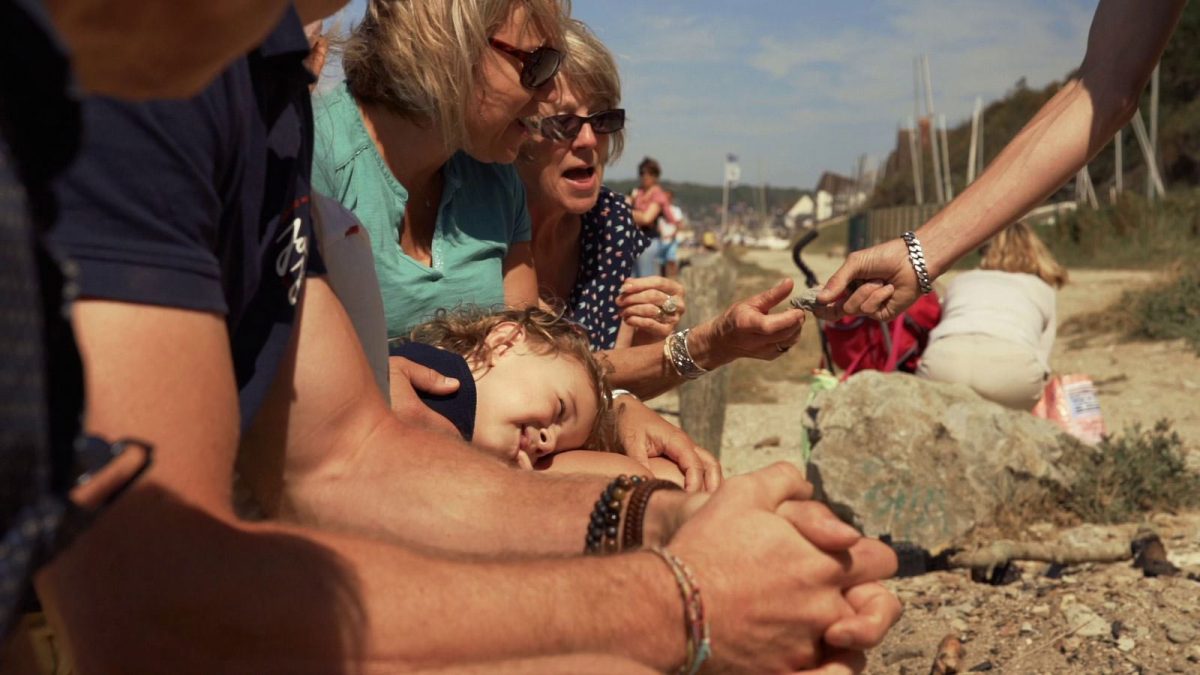
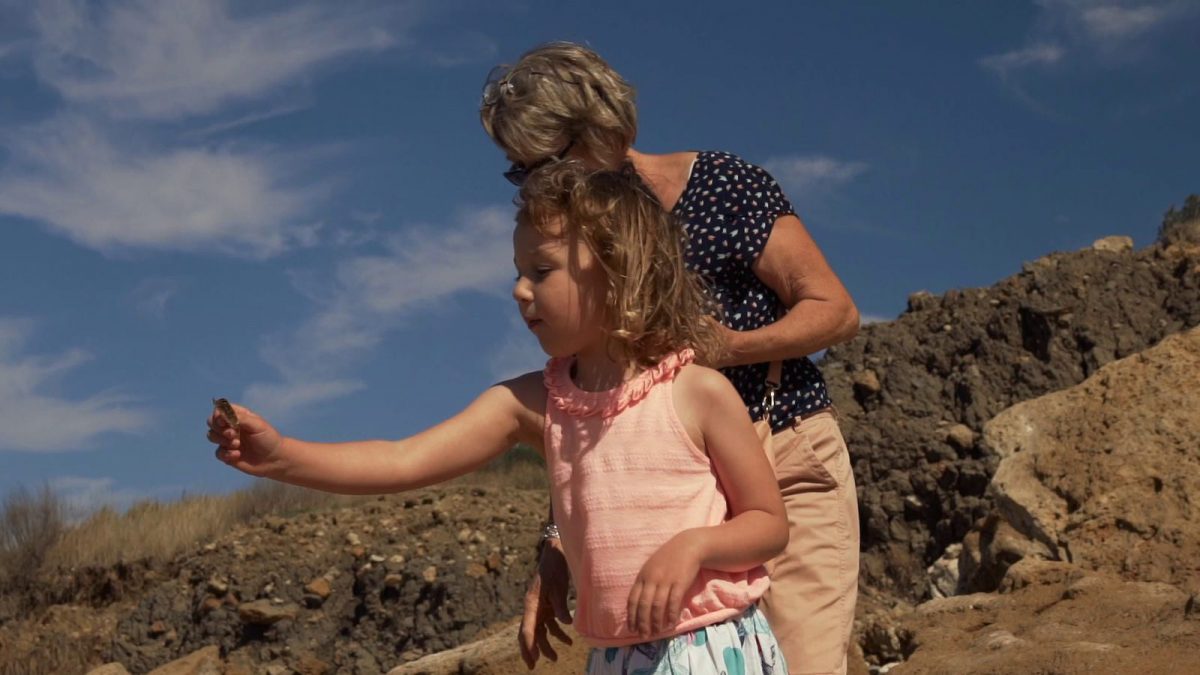
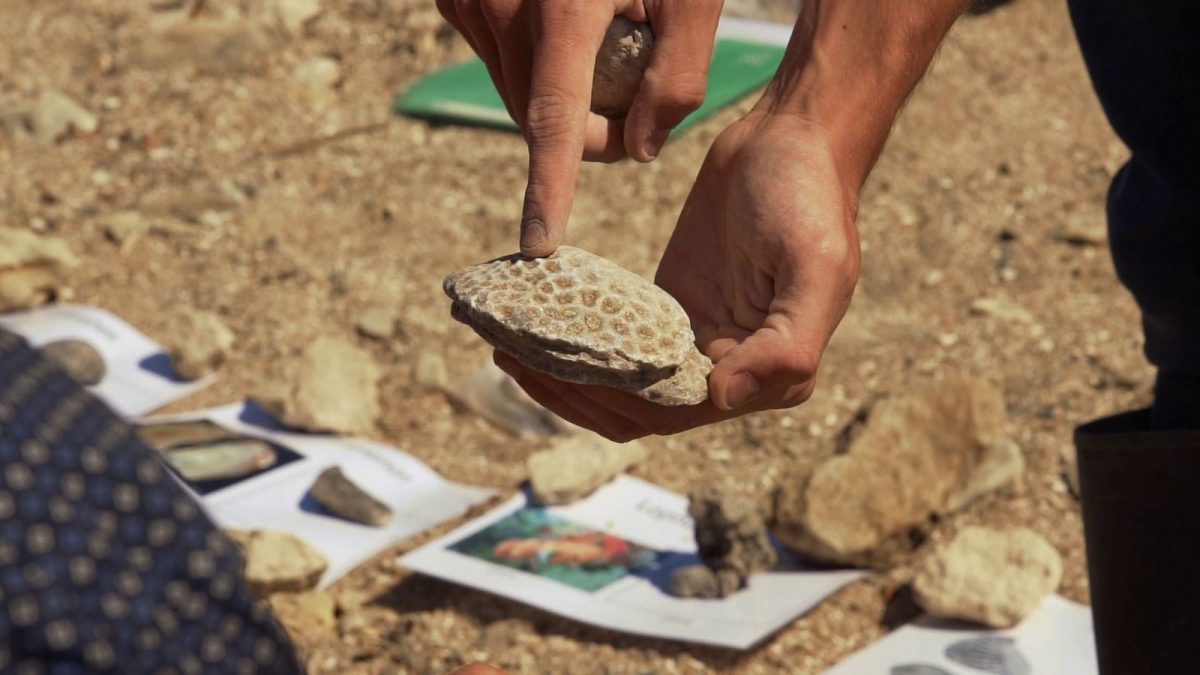
On the look out for fossils
Strolling along this beach searching for fossils is a literal ‘walk backwards through time’ experience. The best tools are a keen eye and patience. All of a sudden, our daughters Charlotte and Giullia stumble across the fossil of a shark’s tooth and of an ammonite dating back hundreds of millions of years. These are both rare and lucky finds according to Jonas, who explains that we’re free to keep the loose fossils that would otherwise have been destroyed by the sea. Following the walk, we delve a little deeper into prehistoric times at the modern and interactive Paléospace Museum; a combo we definitely recommend as both sites provided a hugely satisfying and thought-provoking experience for the whole family!
VILLERS-SUR-MER AND THE VACHES NOIRES CLIFFS
The coastline around the town of Villers-sur-Mer is full of the fascinating remains of Normandy’s prehistoric past, and this is symbolised by the gigantic plant sculpture of a dinosaur opposite the tourist office as you enter the town. The paleontological site of the Vaches Noires cliffs between Villers-sur-Mer and Houlgate has been scientifically recognised for its million years of history.
USEFUL INFORMATION
Fossil hunting on the Vaches Noires cliffs – Paléospace Museum
5 avenue Jean Moulin, 14640 Villers-sur-Mer
Children should wear boots or wellies and adults should bring sturdy shoes, as well as small bag or bucket for any fossils you find and want to take home
Fossil hunts are led by several guides including Jonas
DATES AND TIMINGS 2024
In March and April
The fossil hunt lasts two hours (times are baseds on tides)
Reservation only +33 2 31 81 77 60
PRICES 2024
Adults: €9.90 / Children: €7.90 (From 4 to 14 years old)
Please book your Fossil hunt at the Museum
All of the above information is subject to change
Originally from the Nouvelle Aquitaine region of France, Jonas joined the Paléospace Museum as a scientific mediator in February 2020. His most memorable findings on the Vaches Noires paleontological site are some marine reptile bones (plesiosaurs, ichthyosaurs and metryorhynchus).
